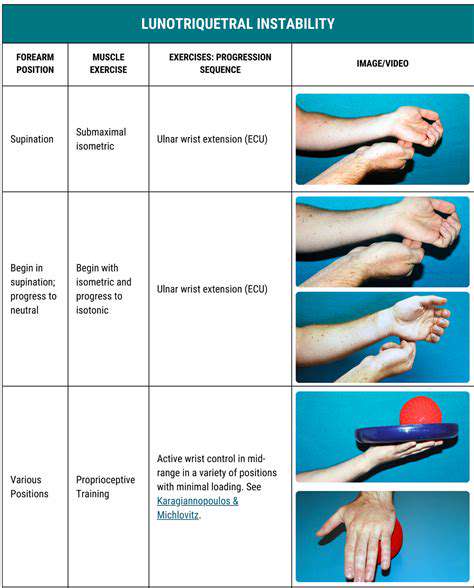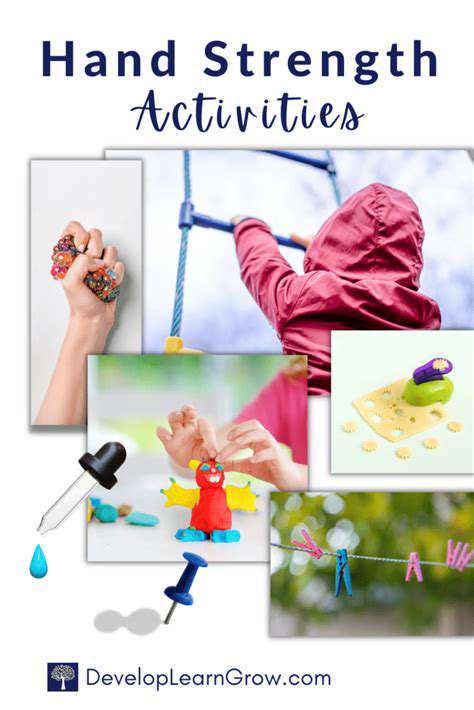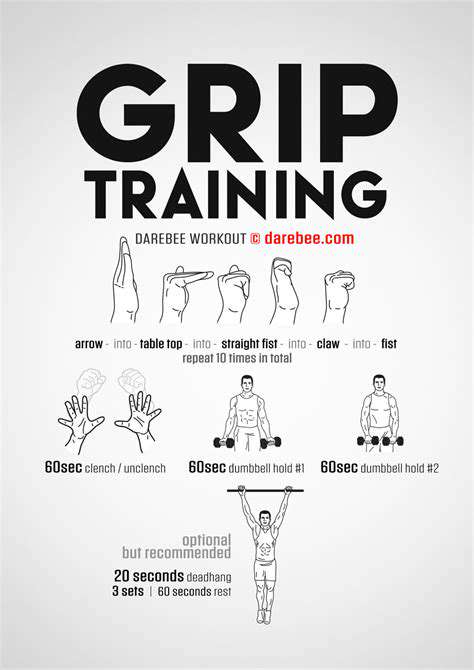Techniques to Promote Arm Flexibility
Understanding the Synergy Between Strength and Flexibility
Strength training and flexibility are often viewed as opposing forces in fitness, but in reality, they work synergistically to enhance overall arm health and function. Strength training, by building muscle mass and improving bone density, provides a foundation of support for the joints, which in turn allows for greater range of motion and improved flexibility. This supportive framework is crucial for preventing injuries and maintaining optimal arm function throughout life, especially as we age.
Think of it like this: strong muscles act as anchors, providing stability and control during movement. This stability allows the surrounding tissues, including ligaments and tendons, to move through their full range of motion with less risk of strain or tear. This dynamic interplay between strength and flexibility ultimately leads to more efficient and less painful arm movements.
Targeted Exercises for Arm Flexibility and Strength
Incorporating specific exercises that target both strength and flexibility is key to achieving a well-rounded approach to arm fitness. Examples include bicep curls, triceps extensions, and overhead presses, which build strength, and shoulder rotations, wrist circles, and arm stretches, which improve flexibility. Progressive resistance is crucial; gradually increasing the weight or resistance used in strength training exercises ensures that muscles are challenged and grow stronger. Likewise, gradually increasing the range of motion during flexibility exercises promotes safe and effective improvements.
Consider incorporating variations of these exercises, such as dumbbell rows and lateral raises, to further engage different muscle groups and promote balanced strength development. Combining these with static stretches, holding each stretch for at least 20-30 seconds, enhances flexibility and promotes recovery.
Addressing Common Arm Issues Through Targeted Training
Many individuals experience arm stiffness, pain, or limited range of motion due to repetitive strain, injury, or age-related changes. Strength training, when correctly implemented, can help alleviate these issues by strengthening the supporting muscles around the affected joints. This support reduces stress on vulnerable areas and promotes a healthier, more functional arm. Targeted exercises, often guided by a physical therapist or certified trainer, can be customized to address specific needs and limitations, ensuring a safe and effective approach.
For example, if you experience pain in your rotator cuff, specific exercises focusing on strengthening the surrounding muscles, combined with gentle range-of-motion stretches, can help restore function and reduce pain. A personalized approach, tailored to individual needs, is crucial for achieving the best possible results.
The Importance of Proper Form and Warm-up
Maintaining proper form during strength and flexibility exercises is paramount to prevent injury and maximize results. Using proper form ensures that the targeted muscles are engaged correctly and that the surrounding joints are not put under undue stress. This is especially important when working with heavier weights or performing complex movements. Thorough warm-up exercises, including dynamic stretches and light cardio, prepare the muscles and joints for the demands of the workout, reducing the risk of injury and promoting better performance.
Consistency and proper technique are essential for achieving the desired results. A certified personal trainer can provide valuable guidance on proper form and personalized exercise recommendations, further enhancing the safety and effectiveness of your strength training and flexibility routine.
Lifestyle Factors Affecting Arm Flexibility: Nutrition and Hydration
The Role of Nutrition in Enhancing Muscular Flexibility
Proper nutrition plays a vital role in maintaining and improving arm flexibility by providing essential nutrients that support muscle health and tissue repair. A balanced diet rich in vitamins, minerals, and proteins helps ensure that muscles remain supple and responsive during stretching exercises. For example, consuming foods high in magnesium, such as nuts and leafy greens, can aid in muscle relaxation and reduce cramps, thereby improving overall flexibility.
In addition to macro- and micronutrients, amino acids from protein sources contribute to the repair and regeneration of muscle fibers, which is crucial after stretching or strength training routines. Adequate intake of antioxidants found in fruits like berries and citrus fruits can also combat oxidative stress, reducing inflammation and promoting healthier muscle tissues. Ensuring proper nutrition supports not only flexibility but also overall muscular resilience and performance.
The Impact of Hydration on Muscle Elasticity
Staying well-hydrated is essential for maintaining optimal muscle elasticity and flexibility. Water makes up a significant portion of muscle tissue, and dehydration can lead to increased muscle stiffness and a higher risk of strains or injuries. When muscles are properly hydrated, they are more pliable and able to stretch without resistance, which enhances flexibility over time.
Dehydration can also impair the delivery of nutrients to muscle cells and slow down metabolic processes necessary for muscle repair and recovery. To maximize flexibility, it is recommended to drink sufficient water throughout the day, especially before, during, and after physical activity. Proper hydration not only supports flexibility but also improves overall exercise performance and reduces the likelihood of muscle cramps.
Dietary Habits That Support Long-Term Flexibility Goals
Developing consistent dietary habits that prioritize nutrient-rich foods can significantly influence long-term arm flexibility. Incorporating a variety of fruits, vegetables, lean proteins, and whole grains ensures that the body receives a steady supply of vital nutrients needed for muscle health and tissue elasticity. Avoiding processed foods high in sugar and unhealthy fats can prevent inflammation and stiffness that hinder flexibility gains.
Moreover, timing meals around stretching routines can enhance the effectiveness of flexibility training. For instance, consuming a light, protein-rich snack before exercising can provide the necessary energy and amino acids for muscle maintenance. Establishing these nutritional routines supports ongoing improvements in arm flexibility and overall musculoskeletal health, making flexibility training more effective and sustainable over time.











